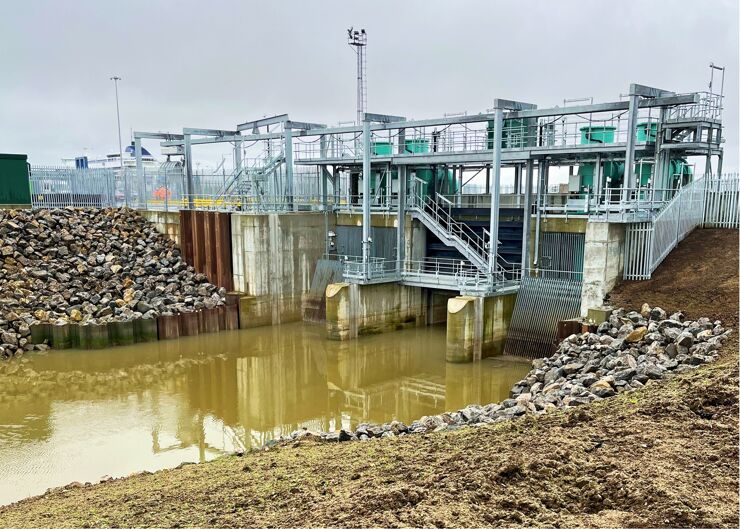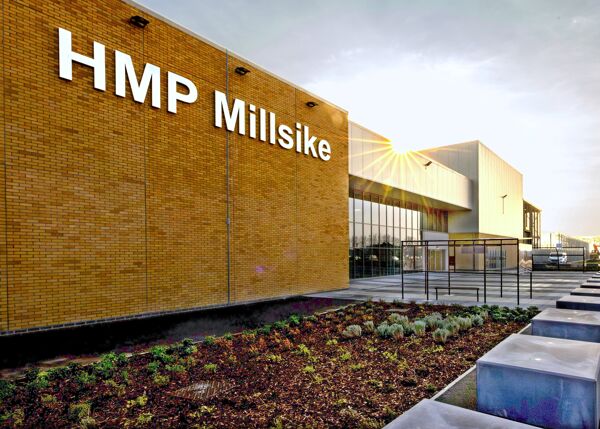
NEC has been used to deliver a new flood alleviation scheme in north-east England to reduce the risk of flooding to around 1000 properties. The Environment Agency let the £28 million project to design and build contractor JBA-Bentley under an NEC3 Engineering and Construction Contract (ECC) Option C (target cost with activity schedule) in July 2019. Turner & Townsend was the NEC project manager.
The Holderness Drain scheme in Yorkshire involved building a new 10m3/s online pumping station in east Hull and a flood storage area at Castle Hill some 6 km to the north. The drain is the only outfall for a 238 km2 catchment and backs up twice daily when it becomes tide-locked by the Humber estuary. During heavy rain this can cause significant flooding, as seen in 2007 when over 55,000 homes and 95 schools were flooded in the city Centre.
The works were undertaken through the Environment Agency’s £2.5 billion 2013−2019 NEC-based water and environment management (WEM) framework. Despite the challenges of Covid-19, Brexit and supply chain inflation, the pumping station and flood storage area were handed over to the agreed revised programme and budget in June and July 2025 respectively.

The scheme has reduced flood risk to around 1000 properties from approximately 20% annual exceedance probability of fluvial and tidal flood events to just 0.5%, in-line with the Humber strategy. Climate resilience and adaption was at the heart of the design, as evidenced by a 20% overdrive capability built into the pumping station.
At the Castlehill ‘aquagreen’, benefits include increased flood storage within the catchment and new woodland habitat and walking routes. It reduces peak pumping requirements at east Hull and creates a valuable social space for the community in dry periods, improving biodiversity. The project was shortlisted for the Environmental Project of the Year in the 2024 British Construction Industry Awards.
Experienced NEC users
Steven Garcia-Vazquez, associate at AECOM working as project executive at the Environment Agency, says ECC Option C was chosen as all parties had previous experience of working within it. ‘It also provided an incentivisation mechanism and proportionate risk allocation, and it promoted collaborative working arrangements.’
He says the level of detail within the outline design was such that it was felt the scope was well defined, the risks were well understood and the appropriate mitigations were in place. ‘This gave us a good level of confidence in the NEC target cost. ‘The design and build approach also allowed the development of a compressed programme as more activities could be carried out concurrently.’
Katherine Huddleston, associate director of Turner & Townsend, says the NEC requirement to act in a ‘sprit of mutual trust and co-operation’ promoted a strong, positive collaboration between all parties throughout the project and this was key to the success of the scheme. ‘NEC processes around risk reduction and early warnings formed part of a structure of regular meetings of the project team.’
Accurate programme
She says the programme, as always with NEC, was a key component of the delivery process. ‘We were therefore keen that we had an accepted programme in place, which accurately represented not only delivery progress but the key dates and milestones. To support this, we held a pre-issue meeting each month at which the contractor was able to run through the programme logic with the team prior to being issued to us as the NEC project manager.’
David Cramp, principal engineer of JBA-Bentley, says a similar joined-up approach was used when it came to the development of the monthly forecast. ‘This was key part in understanding the cash flow and out-turn costs. It could be rolled up into the wider cost schedule to ensure that our forecast and cost management data were always accurate, and final out-turn costs versus the approved scheme budget could be managed closely.’
He says regular weekly meetings meant that when risks and challenges did arise, the team were quick to meet and discuss potential mitigation in a collaborative way. ‘The approach and culture focused around NEC-inspired collaboration and getting these things “out in the open” as soon as possible. This enabled constructive debate and greater understanding of the views of all parties.
Garcia-Vazquez concludes that the approach really helped to better understand the issues at hand, their potential impact and any possible mitigations. ‘Having an open and honest approach from all parties built mutual trust from all parties.’
Benefits of using NEC
- NEC requirement to act in a ‘sprit of mutual trust and co-operation’ promoted a strong, positive collaboration between all parties throughout the project.
- ECC Option C provided an incentivisation mechanism alongside proportionate risk allocation.
- NEC risk reduction and early warning processes meant when risks and challenges did arise, the team were quick to meet and discuss potential mitigation in a collaborative way.




